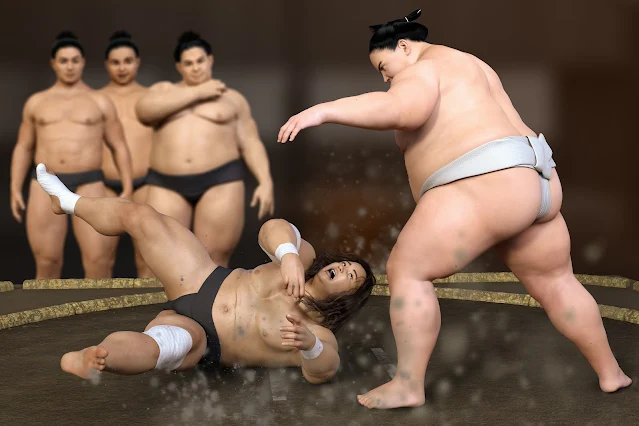
Sumo wrestling, one of Japan's most iconic sports, is known for its powerful and skilled athletes called Rikishi.
These wrestlers participate in the ancient tradition of sumo and belong to sumo stables or "heya."
In this comprehensive guide, we will delve into the fascinating world of Rikishi, exploring its historical significance, unique customs, and the physical and cultural aspects that define this sport.
{tocify} $title={Table of Contents}
The Origins of Rikishi
Sumo wrestling has a long and storied history that dates back centuries.
Initially, sumo was performed as a form of ritualistic entertainment in religious ceremonies.
Over time, it evolved into a competitive sport, with Rikishi gaining recognition for their strength and skill.
The term "Rikishi" refers specifically to those wrestlers who participate in professional sumo, where they compete for prestigious titles and ranking positions.
The Ancient Ranks of Rikishi
Within the world of sumo, Rikishi is classified into various ranks based on their skill level and performance.
These ranks, or "banzuke," are depicted in a hierarchical fashion in the official sumo rankings.
The highest rank a Rikishi can achieve is Yokozuna, followed by Ozeki, Sekiwake, Komusubi, and Maegashira.
Each rank represents a different level of skill and carries its own set of expectations and responsibilities.
The Traditional Attire of Rikishi
One of the most recognizable aspects of sumo wrestling is the traditional attire worn by Rikishi during matches.
The attire consists of a mawashi, a thick loincloth made of silk or cotton, which is wrapped tightly around the wrestler's waist and secured with a knot at the back.
The mawashi serves both functional and symbolic purposes, providing support and protection while also representing the wrestler's status and dedication to the sport.
Place of Birth of Sumo Wrestlers
Rikishi come from diverse backgrounds, and their hometowns play a significant role in shaping their identities.
Historically, many Rikishi hailed from rural areas, where they would train extensively in local sumo dojos.
These dojos serve as training grounds for aspiring wrestlers and provide a supportive community for their development.
In recent years, however, there has been an increase in Rikishi from urban areas, reflecting the evolving nature of the sport.
The Treatment of Rikishi
Rikishi receives special treatment within the sumo community due to their dedication and commitment to the sport.
They live in sumo stables, where they follow a strict daily routine that includes intense training, proper nutrition, and adherence to traditional customs.
The stables are overseen by experienced sumo wrestlers who have retired from active competition and become stablemasters or "oyakata."
These oyakata guide and mentor the Rikishi, shaping their careers and ensuring their physical and mental well-being.
The Physicality of Rikishi
Physicality is at the core of sumo wrestling, and Rikishi undergoes rigorous training to develop their strength, agility, and endurance.
Sumo wrestlers are known for their impressive physiques, characterized by their large bodies and muscular frames.
They follow a strict diet to maintain their weight, often consuming a high-calorie, protein-rich meal called "chankonabe."
This traditional sumo stew consists of various ingredients like meat, fish, vegetables, and tofu, providing the necessary nutrition for their intense training.
The Rise of Foreign Rikishi
In recent years, the world of sumo has witnessed an increase in the participation of foreign Rikishi.
While traditionally dominated by Japanese wrestlers, the sport has become more diverse, attracting talent from around the globe.
Foreign Rikishi faces unique challenges, including cultural adaptation and language barriers.
However, they also bring fresh perspectives and techniques to the sport, enriching the sumo community as a whole.
The Limitations on Foreign Rikishi
To maintain the traditional essence of sumo, there are limitations on the number of foreign Rikishi allowed in professional sumo.
The Japan Sumo Association imposes a quota system, which restricts the number of non-Japanese wrestlers in the top divisions.
This system aims to strike a balance between preserving the sport's cultural heritage and embracing the global interest in sumo.
Perspectives of Foreign Rikishi and Sumo Elders
The inclusion of foreign Rikishi in the sport has sparked debates and discussions within the sumo community.
Some traditionalists believe that sumo should remain exclusively Japanese, while others recognize the value that foreign Rikishi brings to the sport.
Sumo elders and former wrestlers have varying opinions on the matter, reflecting the ongoing dialogue and evolution of sumo as a global phenomenon.
The Diverse Origins of Foreign Rikishi
Foreign Rikishi comes from a wide range of countries and cultural backgrounds.
The presence of wrestlers from Mongolia, Brazil, Eastern Europe, and other nations has added an international flavor to the sport.
Each foreign Rikishi brings their own unique style and techniques, contributing to the overall competitiveness and excitement of sumo.
The Gallery of Rikishi
Throughout history, sumo wrestlers have been celebrated and immortalized in various art forms, including paintings and woodblock prints.
These artworks, known as "ukiyo-e," depict Rikishi in action, capturing their power and grace.
The gallery of Rikishi showcases the vibrant artistic tradition associated with sumo, providing a visual testament to the sport's enduring appeal.
Conclusion
Sumo wrestling and its dedicated practitioners, the Rikishi, are an integral part of Japan's cultural heritage.
The world of sumo offers a glimpse into a unique sporting tradition characterized by physical prowess, discipline, and respect.
Whether you are a fan of the sport or simply intrigued by its rich history, exploring the world of Rikishi provides an opportunity to appreciate the beauty and complexity of sumo wrestling.
Finally, I'd like to introduce you to an article written by a former sumo wrestler, offering a unique perspective and insider's view into the world of sumo.

Post a Comment